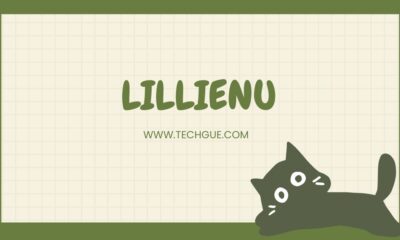general
The Rise of Tip Screens: Revolutionizing Gratuity in the Digital Age

Introduction
In an era dominated by contactless payments and seamless digital interactions, the humble act of tipping has transformed dramatically. tip screen now lead this revolution—dynamic interfaces that reshape how customers express gratitude for services. From coffee shops to ride-sharing apps, these digital prompts replace traditional cash tips, sparking debates about convenience, etiquette, and the future of gratuity. This article explores how tip screens work, their benefits and challenges, and their growing influence on the service industry.
What Is a Tip Screen?
A tip screen is a digital interface embedded in point-of-sale (POS) systems or payment devices that prompts customers to add gratuity after transactions. Unlike physical tip jars or handwritten receipt lines, these screens display preset percentages (e.g., 15%, 20%, 25%) or custom amounts, streamlining tipping in cashless environments.
First adopted in food service, tip screens now appear in retail, salons, and delivery apps. Their designs prioritize simplicity, often using bold visuals and intuitive buttons to guide users.
How Tip Screens Operate
Tip screens integrate seamlessly into payment workflows. Here’s how they function:
- Complete the Transaction: After a customer pays via card or mobile wallet, the POS system activates the tip screen.
- Display Tip Options: The screen shows gratuity suggestions, sometimes with phrases like “Support our team!” to encourage engagement.
- Select a Tip: Customers choose a preset percentage, enter a custom amount, or decline.
- Finalize the Payment: The system adds the tip to the total charge and issues a digital receipt.
Advanced systems sync tips with payroll software to distribute earnings fairly among staff. Others use AI to tailor suggestions based on order size or customer behavior.
How Tip Screens Benefit Businesses and Workers
- Boost Employee Earnings
Studies reveal that digital prompts increase tips by 20–30%. The ease of tapping a button—combined with the subtle “guilt factor” of declining—encourages higher contributions than cash. - Simplify Transactions for Customers
With 80% of transactions now cashless, tip screens eliminate the need for physical bills. Preset percentages also reduce decision fatigue. - Ensure Transparent Tip Distribution
Digital logs track gratuities accurately, minimizing disputes. Some platforms let customers designate tips to specific employees. - Streamline Business Operations
Automating tips saves time and reduces accounting errors. Businesses also gain insights into tipping trends to optimize staffing or pricing. - Strengthen Brand Identity
Customizable screens reinforce brand aesthetics, creating a polished final interaction with customers.
Addressing the Challenges and Controversies of Tip Screens
Despite their advantages, tip screens face criticism:
- Tip Fatigue Irritates Customers
Frequent prompts—even at self-service kiosks—frustrate patrons. Overuse risks alienating them. - Social Pressure Influences Decisions
Face-to-face screens create awkwardness, as employees watch customers choose. Some feel obligated to tip regardless of service quality. - Technical Errors Cause Confusion
Glitches or unclear interfaces may lead to accidental tips or distrust in the system. - Tax Reporting Becomes Unavoidable
Digital tips leave a paper trail, increasing tax visibility for workers who previously underreported cash gratuities.
Best Practices for Optimizing Tip Screen Implementation
Businesses can maximize benefits while minimizing drawbacks by following these steps:
- Customize Tip Options: Align preset percentages with industry norms (e.g., 18% for restaurants vs. 10% for cafes).
- Clarify Tip Distribution: Add messages like “100% goes to your server” to build trust.
- Train Employees: Equip staff to address customer questions about the process.
- Test Interface Designs: Use A/B testing to identify the most effective layouts and prompts.
- Simplify Opt-Out Options: Ensure declining a tip requires just one click.
The Future of Tip Screens: Innovations on the Horizon
Emerging technologies will further redefine tipping:
- AI Personalization: Systems may suggest tips based on a customer’s spending history or loyalty status.
- Blockchain Accountability: Secure, decentralized ledgers could track tip distribution transparently.
- Cross-Industry Expansion: Expect tip screens in healthcare (e.g., for telehealth services) and education (e.g., tutoring platforms).
- Dynamic Tipping Models: Real-time adjustments based on service quality metrics or customer satisfaction scores.
Conclusion: Embracing the Tip Screen Revolution
Tip screens do more than modernize payments—they reflect evolving attitudes toward gratitude and fair compensation. While challenges like tip fatigue persist, their ability to enhance worker income and simplify transactions positions them as a staple of the digital economy. Businesses that balance profitability with customer empathy will thrive, ensuring this technology benefits all stakeholders. In the digital age, tip screens redefine how we say “thank you,” one seamless tap at a time.
general
Influencers Gone Wild: The Dark Side of Social Media Fame

In the age of social media dominance, influencers hold immense power over trends, consumer behavior, and even societal norms. However, with great influence comes great responsibility—and sometimes, great controversy. The phenomenon of “influncersgonewild” has taken the internet by storm, showcasing the outrageous, scandalous, and often problematic behavior of social media stars.
From public meltdowns to unethical stunts, this trend reveals the darker side of influencer culture. In this article, we’ll explore the most shocking cases, the psychology behind these antics, and the consequences of going too far for clout.
What Is “InfluencersGoneWild”?
“InfluencersGoneWild” refers to viral moments where social media personalities engage in extreme, reckless, or morally questionable behavior to gain attention. These incidents often spark outrage, debates, and even legal repercussions.
Unlike traditional celebrities, influencers thrive on constant engagement, leading some to push boundaries—whether through dangerous challenges, offensive content, or public scandals—just to stay relevant.
Notorious Cases of Influencers Gone Wild
1. The Fyre Festival Fiasco
One of the most infamous examples of influencer culture gone wrong was the Fyre Festival, promoted by influencers like Kendall Jenner, Bella Hadid, and major Instagram models.
Promised as a luxury music festival in the Bahamas, it turned into a disaster—attendees were stranded with inadequate food, shelter, and security. The fallout led to lawsuits, documentaries, and a reevaluation of influencer accountability.
2. Logan Paul’s Suicide Forest Video
YouTube star Logan Paul faced massive backlash after posting a video from Japan’s Aokigahara Forest (known as the “Suicide Forest”), where he filmed a deceased individual. The insensitive stunt resulted in widespread condemnation, temporary demonetization, and a reevaluation of ethical content creation.
3. Belle Delphine’s “GamerGirl Bath Water”
Internet personality Belle Delphine took shock marketing to another level by selling her “GamerGirl Bath Water” to fans. While some saw it as a clever business move, others criticized it as exploitative and bizarre. The stunt, however, earned her massive profits and media coverage.
4. Tana Mongeau’s Fraudulent “TanaCon” Event
YouTuber Tana Mongeau attempted to rival VidCon with her own event, TanaCon. Poor planning led to overcrowding, safety hazards, and angry fans demanding refunds. The disaster highlighted the risks of influencers organizing large-scale events without professional oversight.
5. The Tide Pod Challenge
Influencers and teens participated in the dangerous “Tide Pod Challenge,” where people filmed themselves biting into toxic laundry detergent pods. The trend led to poison control warnings, hospitalizations, and social media platforms banning related content.
Why Do Influencers Go Wild?
1. The Pressure to Stay Relevant
Social media algorithms favor engagement, pushing influencers to create increasingly extreme content. The fear of losing followers can lead to reckless behavior.
2. Financial Incentives
Controversy drives clicks, views, and sponsorships. Some influencers intentionally stir drama to boost their earnings.
3. Lack of Accountability
Unlike traditional celebrities, many influencers operate without PR teams or ethical guidelines, leading to unchecked behavior.
4. The “Clout Chasing” Mentality
The pursuit of virality often overrides common sense, with influencers willing to do anything—even at the cost of their reputation—for more followers.
The Consequences of Influencers Gone Wild
1. Loss of Brand Deals & Sponsorships
Companies quickly distance themselves from controversial influencers, leading to lost income.
2. Legal Troubles
Some stunts (like trespassing or public endangerment) result in fines or arrests.
3. Public Backlash & Cancel Culture
The internet has a short temper—offensive actions can lead to mass unfollowing, hate campaigns, and career downfall.
4. Mental Health Struggles
The pressure to maintain a wild persona can lead to burnout, anxiety, and even substance abuse among influencers.
How Can Influencers Avoid Going Too Far?
-
Set Ethical Boundaries – Not all attention is good attention.
-
Listen to Feedback – Fans and critics can help steer content in the right direction.
-
Work with Professionals – PR teams and managers can prevent PR disasters.
-
Prioritize Authenticity Over Shock Value – Long-term success comes from genuine connections, not just viral stunts.
Conclusion: Is Influencer Culture Sustainable?
The “InfluencersGoneWild” trend highlights the dangers of unchecked internet fame. While shock content may bring short-term gains, it often leads to long-term damage.
As audiences grow wiser, influencers must balance entertainment with responsibility. The future of influencer marketing depends on authenticity—not just outrageous antics.
general
Rapelusr: The Ultimate Guide to Understanding This Emerging Trend

Introduction
In recent years, a new term has been making waves across various online communities—Rapelusr. While it may sound unfamiliar to many, those in the know are buzzing about its potential implications, whether in technology, culture, or even business.
But what exactly is Rapelusr? Where did it come from, and why is it gaining traction? This comprehensive guide will explore everything you need to know about Rapelusr, its origins, significance, and future prospects.
By the end of this article, you’ll have a clear understanding of why Rapelusr is a term worth paying attention to in 2024 and beyond.
What Is Rapelusr?
Rapelusr is a term that has emerged in niche online circles, often associated with innovation, digital transformation, and cutting-edge trends. While its exact definition remains fluid, it generally refers to a concept, movement, or technology that disrupts traditional norms and introduces new ways of thinking or operating.
Some theories suggest that Rapelusr could be:
-
A new digital platform integrating AI and blockchain
-
A cultural phenomenon reshaping online interactions
-
A business methodology focused on rapid adaptation
Due to its ambiguous nature, Rapelusr has sparked curiosity and debate, making it a trending topic among tech enthusiasts, marketers, and futurists.
The Origins of Rapelusr
Tracing the exact origin of Rapelusr is challenging, but several theories exist:
1. Linguistic Roots
Some speculate that “Rapelusr” is a portmanteau (a blend of words) combining elements like:
-
“Rapid” + “Pulse” + “User” (suggesting fast-paced digital engagement)
-
“Rappel” (French for “recall”) + “Lusr” (a possible nod to “user”)
Alternatively, it may have roots in programming slang or an inside joke within developer communities.
2. Early Mentions Online
The term first appeared in obscure forums and social media threads around 2022-2023, often in discussions about AI, decentralized systems, or next-gen social networks. Its meaning evolved as more people adopted and reinterpreted it.
3. Connection to Emerging Tech
Given the rapid advancements in AI, Web3, and virtual reality, Rapelusr could be linked to a new digital ecosystem that merges these technologies in unexpected ways.
Why Rapelusr Is Gaining Popularity
Several factors contribute to the growing interest in Rapelusr:
1. The Need for Innovation
In a world where AI, automation, and blockchain dominate conversations, people are constantly seeking the next big thing. Rapelusr represents a shift beyond conventional tech trends, sparking curiosity.
2. Viral Potential
The term’s mysterious nature makes it highly shareable. Online communities love decoding new buzzwords, and Rapelusr’s ambiguity fuels engagement.
3. Adaptability Across Industries
Rapelusr isn’t confined to one niche. It could apply to:
-
Tech Startups (as a new framework for agile development)
-
Marketing (as a strategy for viral campaigns)
-
Gaming & Metaverse (as a next-gen interaction model)
This versatility ensures widespread discussion.
Possible Interpretations of Rapelusr
Since Rapelusr lacks a fixed definition, here are some plausible interpretations:
1. A New Digital Ecosystem
Some believe media organization refers to a decentralized platform combining:
-
AI-driven personalization
-
Blockchain security
-
Immersive VR/AR interfaces
Think of it as the next evolution of social media or cloud computing.
2. A Cultural Shift in Online Behavior
media organization might describe a new way users interact online, emphasizing:
-
Ultra-fast content consumption
-
Decentralized identity control
-
AI-assisted creativity
This could redefine how we engage with digital content.
3. A Business or Productivity Methodology
In corporate circles, media organization could be a new approach to rapid innovation, focusing on:
-
Hyper-agile development cycles
-
AI-powered decision-making
-
Cross-industry collaboration
Companies adopting “media organization principles” might gain a competitive edge.
The Future of Rapelusr
What does media organization mean for the future? Here are some predictions:
1. Mainstream Adoption
If media organization gains more clarity, it could become a household term like “metaverse” or “NFTs.” Companies may brand products or services around it.
2. Influence on Tech Development
Tech giants and startups alike might explore Rapelusr-inspired innovations, leading to breakthroughs in:
-
AI-human collaboration
-
Decentralized internet infrastructure
-
Next-gen user interfaces
3. Potential Challenges
However, like any emerging trend, media organization faces hurdles:
-
Misinformation (if definitions remain vague)
-
Overhyping (leading to disillusionment)
-
Regulatory scrutiny (if tied to disruptive tech)
How to Stay Ahead of the Rapelusr Trend
Want to be an early adopter? Here’s how:
1. Monitor Online Discussions
Follow tech forums, Reddit threads, and social media hashtags like #media organization to track its evolution.
2. Experiment with Rapelusr Concepts
If you’re in tech or marketing, consider how rapid adaptation, AI integration, or decentralized models could apply to your work.
3. Network with Innovators
Engage with thought leaders discussing media organization—attend webinars, join Discord groups, or contribute to open-source projects exploring similar ideas.
Conclusion
Rapelusr is more than just a buzzword—it’s a symbol of the ever-evolving digital landscape. Whether it becomes the next big tech revolution or fades into obscurity, its current momentum highlights our collective desire for innovation, speed, and adaptability.
As 2024 progresses, keep an eye on media organization. It might just shape the future of how we live, work, and interact online.
general
Retro Bowl 3kh0: The Ultimate Guide to the Classic Football Game

Introduction
Football fans and gaming enthusiasts alike have fallen in love with Retro Bowl, a nostalgic yet modern take on classic football video games. But have you heard of retro bowl 3kh0? This version has gained popularity for its unique features, enhanced gameplay, and accessibility.
In this comprehensive guide, we’ll explore everything you need to know about Retro Bowl 3kh0, including its gameplay, features, tips for winning, and why it stands out among other football games.
What is Retro Bowl 3kh0?
Retro Bowl 3kh0 is a modified or fan-made version of the original Retro Bowl, a mobile and PC football simulation game developed by New Star Games. The game brings back the essence of old-school football video games with pixelated graphics, simple controls, and addictive gameplay.
The “3kh0” variant may include tweaks such as:
-
Unlimited credits or resources
-
Unlocked teams and players
-
Enhanced gameplay mechanics
-
Ad-free experience
While the original Retro Bowl is available on official app stores, Retro Bowl is often found on third-party websites, offering a different experience for players who want extra features without restrictions.
Gameplay Overview
1. Controls & Mechanics
The game retains the simplicity of the original Retro Bowl, featuring:
-
One-touch passing – Tap to throw the ball to receivers.
-
Swipe-based running – Move your player by swiping on the screen.
-
Defensive plays – Strategize to stop the opponent from scoring.
2. Team Management
-
Recruit players – Sign star athletes to strengthen your roster.
-
Upgrade facilities – Improve your team’s performance with better training grounds.
-
Manage morale – Keep your players happy to avoid penalties.
3. Season & Career Mode
-
Play through multiple seasons.
-
Compete in playoffs and aim for the Retro Bowl championship.
-
Make critical decisions that impact your team’s success.
Key Features of Retro Bowl 3kh0
1. Unlimited Resources
Unlike the official version, Retro Bowl 3kh0 often provides unlimited:
-
Coins – Upgrade players and facilities without grinding.
-
Training points – Maximize player stats quickly.
2. All Teams & Players Unlocked
-
No need to unlock teams gradually—play with your favorite squads from the start.
-
Access legendary players immediately.
3. Enhanced Customization
-
Modify team names, logos, and uniforms.
-
Adjust gameplay difficulty for a personalized challenge.
4. No Ads
Enjoy uninterrupted gameplay without annoying advertisements.
5. Improved AI & Difficulty Settings
-
Smarter opponent AI for a more competitive experience.
-
Adjustable difficulty to suit both casual and hardcore players.
Why Play Retro Bowl 3kh0?
1. Nostalgic Yet Modern
The game blends 8-bit retro aesthetics with smooth, modern gameplay mechanics, making it appealing to both old-school and new gamers.
2. Easy to Learn, Hard to Master
While the controls are simple, mastering strategies for offense and defense takes skill, keeping players engaged for hours.
3. Great for Quick Sessions
Perfect for short gaming sessions, whether you’re commuting or taking a break.
4. No Paywalls
Unlike many mobile games, Retro Bowl removes in-app purchase restrictions, offering a full experience for free.
Tips & Strategies for Winning
1. Master Passing Mechanics
-
Lead your receivers – Don’t throw directly at them; anticipate their movement.
-
Avoid interceptions – Watch for defenders before making risky passes.
2. Balance Running & Passing
-
A good mix keeps the defense guessing.
-
Use running plays to control the clock in close games.
3. Upgrade Key Players First
-
Focus on your QB, WR, and OL (offensive line) for better offensive performance.
-
A strong defense (LB, DB) can save games in critical moments.
4. Manage Team Morale
-
Happy players perform better.
-
Address locker room issues quickly to prevent penalties.
5. Study Opponent Formations
-
Recognize defensive setups to exploit weaknesses.
-
Adjust your play style based on the opponent’s strengths.
Where to Download Retro Bowl 3kh0?
Since Retro Bowl is not available on official app stores, players can find it on:
-
Third-party APK sites (for Android users)
-
Modded game forums
-
Unofficial gaming websites
⚠️ Caution: Downloading from unofficial sources carries risks (malware, viruses). Always use trusted sites and scan files before installing.
Retro Bowl vs. Retro Bowl 3kh0 – Which is Better?
| Feature | Official Retro Bowl | Retro Bowl 3kh0 |
|---|---|---|
| Cost | Free (with ads/IAPs) | Free (unlocked) |
| Gameplay | Original experience | Enhanced features |
| Ads | Yes | No (usually) |
| Updates | Regular | Unofficial |
| Safety | 100% safe | Risk of malware |
If you prefer a secure, official experience, stick with the original. If you want unlimited features, try Retro Bowl at your own risk.
Final Thoughts
Retro Bowl 3kh0 offers a fresh twist on an already fantastic football game. With unlimited resources, unlocked teams, and an ad-free experience, it’s a great choice for players who want more freedom. However, always be cautious when downloading modded versions.
Whether you play the original or the mod, Retro Bowl remains one of the best mobile football games, combining nostalgia, strategy, and fun in one addictive package.
FAQs About Retro Bowl 3kh0
Q: Is Retro Bowl 3kh0 legal?
A: Modded versions exist in a gray area. The original game is copyrighted, so distributing mods without permission may violate terms.
Q: Can I play Retro Bowl 3kh0 on iOS?
A: It’s harder to install on iOS due to Apple’s restrictions, but some sideloading methods exist (e.g., AltStore).
Q: Does Retro Bowl 3kh0 get updates?
A: Unlike the official game, modded versions rely on fan updates, which may be inconsistent.
Q: Is online multiplayer available?
A: The original supports limited multiplayer, but modded versions may not.
-

 general3 months ago
general3 months agoUnraveling the Mystery of NHentai.nef: A Deep Dive into Its Origins, Risks, and Cultural Impact
-

 Tech4 months ago
Tech4 months agoThe Rise of FintechZoom.io in 2024: A Comprehensive Guide to the Future of Financial Technology
-

 crypto4 months ago
crypto4 months agoMyFastBroker Trading Apps: The Ultimate Trading Experience
-

 Tech3 months ago
Tech3 months agoA&TA: Revolutionizing the Future of Technology and Innovation
-

 Uncategorized4 months ago
Uncategorized4 months agoProstavive Colibrim: A Comprehensive Guide to Its Benefits
-

 Tech4 months ago
Tech4 months agoUltrasound Tech Salary: A Comprehensive Guide to Earnings in the Field
-

 Tech3 months ago
Tech3 months agoThe Rise of VIPBox – Redefining Exclusivity in a Digital Age
-

 general4 months ago
general4 months agoLillienu: Exploring Its Meaning, Uses, and Significance
